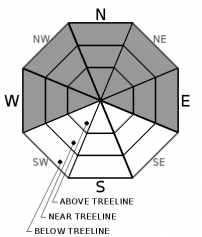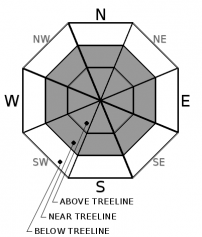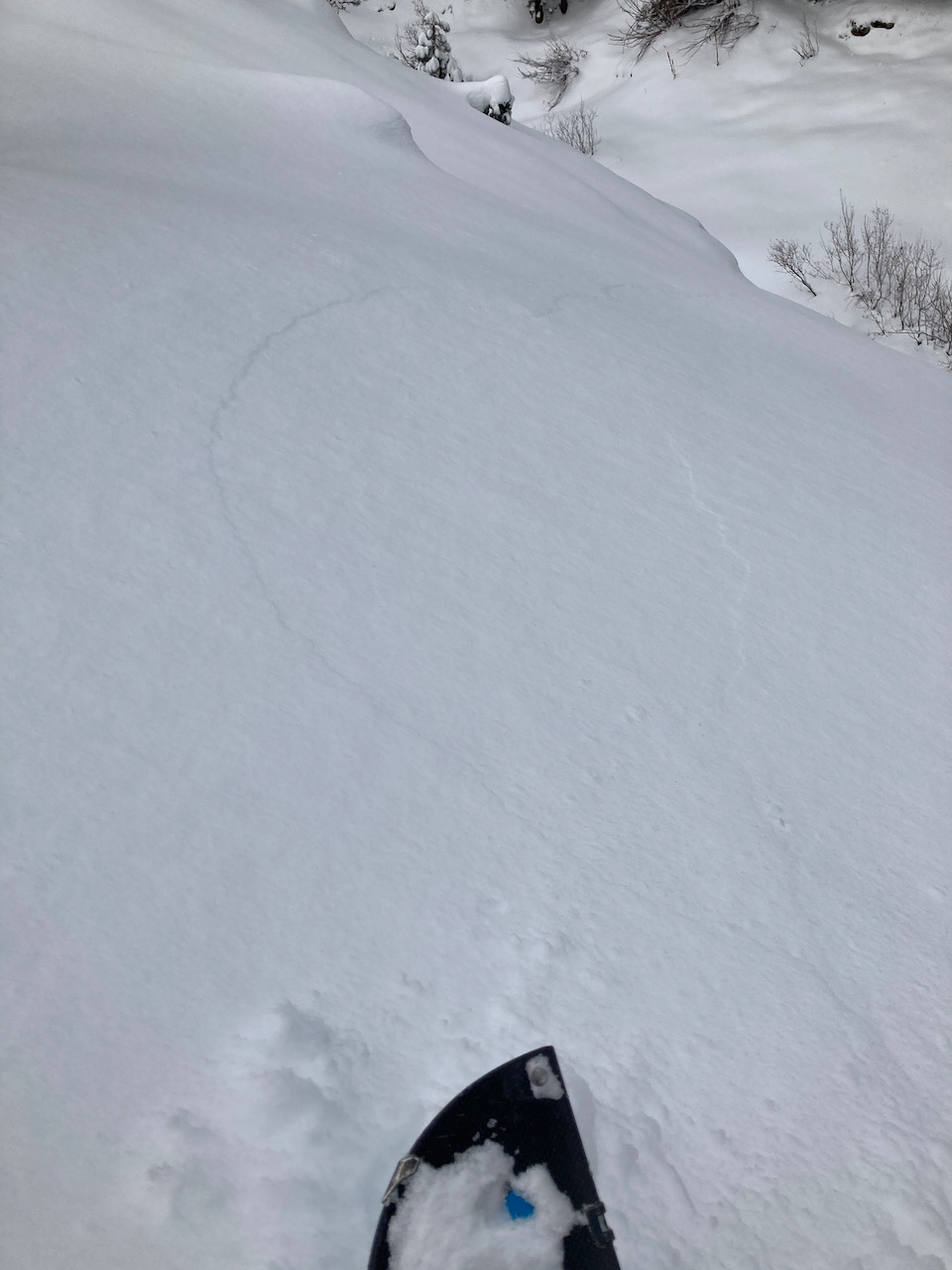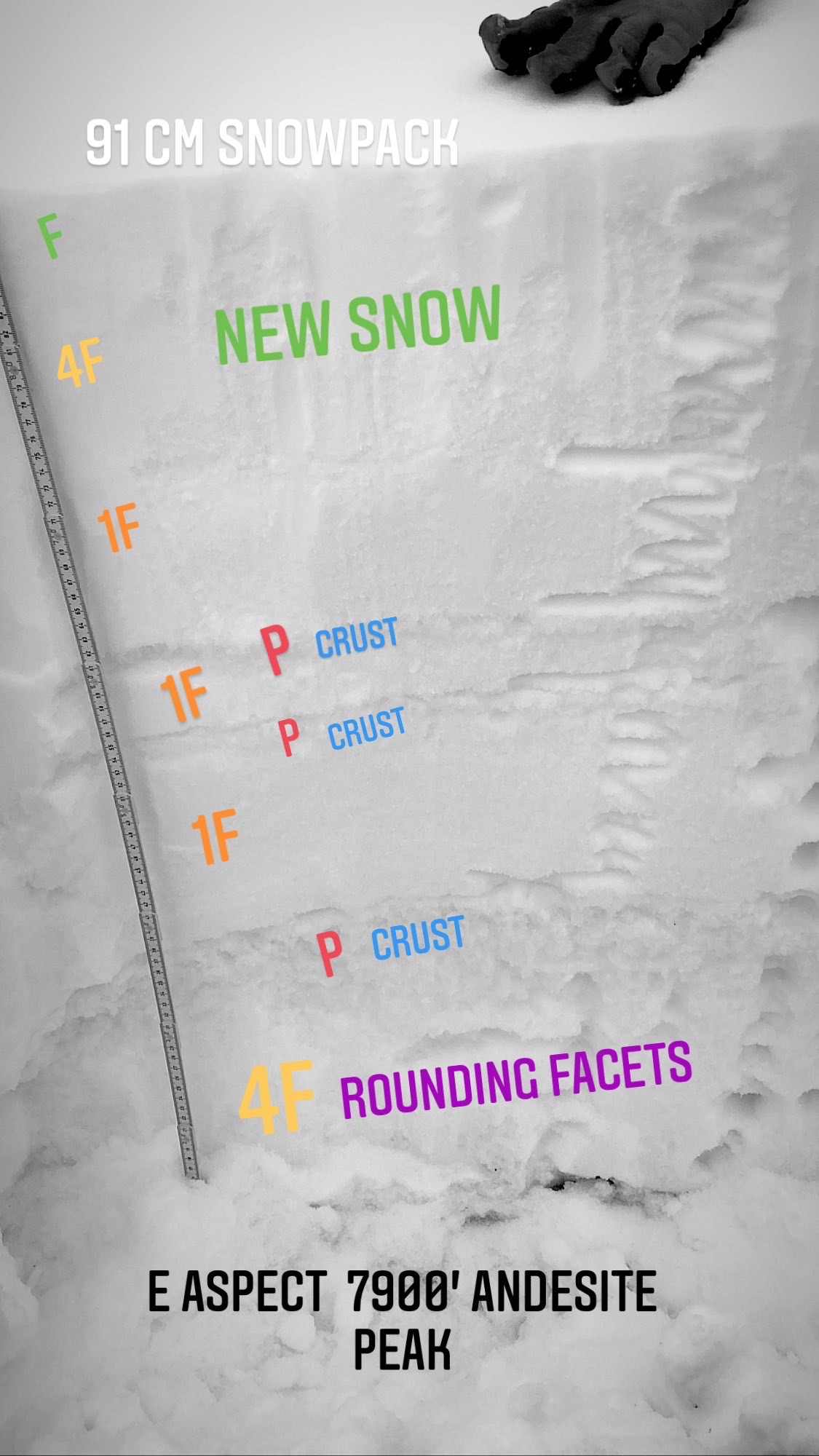| Tuesday | Tuesday Night | Wednesday | |
|---|---|---|---|
| Weather: | Sunny. Snow levels below 7000 feet. Chance of precipitation is 0%. | Clear then becoming partly cloudy. Snow levels below 7000 feet. Chance of precipitation is 0%. | Mostly cloudy. Snow levels below 7000 feet. Chance of precipitation is 0%. |
| Temperatures: | 30 to 35. deg. F. | 14 to 22. deg. F. | 34 to 39. deg. F. |
| Mid Slope Winds: | East winds 10 to 15 mph with gusts up to 35 mph in the morning then becoming east 5 to 10 mph. | Light winds. | Light winds. |
| Expected snowfall: | No accumulation. | SWE = none. | No accumulation. | SWE = none. | No accumulation. | SWE = none. |
| Tuesday | Tuesday Night | Wednesday | |
|---|---|---|---|
| Weather: | Partly cloudy then becoming sunny. Snow levels below 7000 feet. Chance of precipitation is 0%. | Clear then becoming partly cloudy. Snow levels below 7000 feet. Chance of precipitation is 0%. | Mostly cloudy. Snow levels below 7000 feet. Chance of precipitation is 0%. |
| Temperatures: | 26 to 32. deg. F. | 13 to 19. deg. F. | 31 to 36. deg. F. |
| Ridge Top Winds: | Northeast 25 to 40 mph decreasing to 20 to 30 mph in the afternoon. Gusts up to 80 mph in the morning decreasing to 60 mph in the afternoon. | Northeast 15 to 30 mph with gusts to 55 mph shifting to the west around 15 mph with gusts to 30 mph after midnight. | West 15 to 20 mph. Gusts up to 30 mph increasing to 40 mph in the afternoon. |
| Expected snowfall: | No accumulation. | SWE = none. | No accumulation. | SWE = none. | No accumulation. | SWE = none. |



























